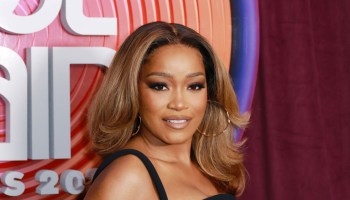The evolution of the Barbie brand has elevated so much during the course of her life from her career choices, the various lifestyles, and even the accessories. In the new millennium, inclusivity is most important to this generation but there was a time where Black women even had to fight for the rights to be seen in the doll industry.
Barbie’s official birthday, March 9, 1959, is when she first debuted on the shelves at the American Toy Fair in New York City and became the first toy to be mass-produced in the country. Ruth Handler, the co-founder of Mattel, Inc., founded the company alongside her husband after finding a need in the toy market. Sources reported that Handler saw her young daughter ditching playing with baby dolls and instead played more with paper dolls of adult women. From there, the birth of Barbie Millicent Roberts, also known as ‘Barbie’ happened. The mother believed that giving little girls a toy to imagine the future was the niche.
According to History, Handler was inspired by a Herman comic-strip character named Bild Lilli, that was “originally marketed as a racy gag gift that men could buy in tobacco shops.” She reflected on the glamorous styles of popular celebrities during that era like Elizabeth Taylor and Marilyn Monroe. Selling at $3.00 each in its first year, 300,000 dolls were sold. Through her early stages, Barbie went through a resume of different careers, gained a boyfriend, family, and friends, plus celebrity dolls before introducing an African-American doll.
About 10 years later in 1968, the first black doll, “Christie” made her appearance. Though there was “Francie” who was released the year before as the first dark completion in the Mattel line, Christie was the first Barbie with “black” features. Talking Christie debuted as one of Barbie’s friends and had the same body and could share her clothes. Her look varied from long and short dark brown/black hair. The Barbie came in four versions, Talking, Twist ‘n Turn, Live Action, and Sunset Malibu. Only a year after Christie was created, the “Julia” doll appeared in 1969 based on Diahann Carroll’s character from the TV show “Julia”. The doll mirrored Carroll’s role of a nurse and a single widowed mother that wore a two-piece nurse uniform in the Twist ‘N Turn model. Later the Talking Julia doll came in a gold and silver one-piece jumpsuit, darker skin, and a fuller hairstyle. The Julia doll was one of the first celebrity Barbies.
Christie began to evolve transitioning to darker skin and afro hair in the later years before the mold was discontinued in 1978. According to Mattel, the creation of Christie was “in support of equal rights” during that time and was very significant. Though Christie was stamped as a friend of Barbie and broke barriers as the first Mattel doll with black features, it wasn’t until 1980 when the first official doll named “Barbie” premiered.
After Christie lived in Barbie’s shadows as “the black friend”, Mattel decided to diversify their collection. 21 years after Barbie’s debut and 12 years after Christie’s launch, the first African-American Barbie was released alongside the first Hispanic doll and 40 other international dolls.
Louvenia (Kitty) Black Perkins got her big break in the summer of 1976. Not only would she become the first black designer at Mattel but the woman to design the first Black Barbie.
Growing up in a small city in South Carolina, Perkins couldn’t afford a Barbie doll and played with white dolls handed down from her mother’s employers. After graduating high school, the young fashion designer headed to Los Angeles and put her name on the waiting list at Los Angeles Trade Technical College. While waiting, she took a fashion design course where she proved to herself that she was fit for design along with her previous experience of sewing her outfits as a teen.
After graduating with a fashion design degree in 1971, Perkins began her fashion career designing children’s clothes and sportswear at big retailers like Bloomingdales, J.C. Penney, and Sears. She struggled with breaking into the industry until she responded to a newspaper ad for a clothes designer for Mattel in 1976. To prepare for her interview, the 28-year-old fashion designer finally purchased her own Barbie. For the interview, Mattel instructed her to bring back the Barbie in a week with a new wardrobe. The Barbie company thought the “hand-sewed a floral print voile jumpsuit with tiered legs and puff sleeves, and a matching wide-brimmed hat” that Perkins originally designed was “too elaborate and expensive for mass production” but Perkins persuaded them to give her a shot. In a matter of a month, she became a permanent employee and continued to design for the company for over 25 years. She would design the first Black Barbie after being with Mattel for four years.
“My first week (at Mattel), I would just sit and brush Barbie’s hair,” she told Greenville News. “It would give me ideas, it was a thinking process for me.” She remembers sitting on the floor and thinking of ways to get into a child’s mind during brainstorming sessions with her team.
Perkins created Black Barbie to stand out and to finally be her own doll. According to Dolls Magazine, she wanted the Barbie to display confidence, glamour, and sophistication. The designer admired black stars during that era like Diana Ross and The Supremes and used the music industry and TV as a big influence.
“Barbie offers a whole new way for children to imagine and play. With that in mind, knowing that the Afro-American community was looking for something that they could identify with and that children could be proud of, I think we achieved that with the Black Barbie doll,” Perkins shared in an official Mattel press release.
The Black Barbie stood out because she was the complete opposite of traditional Barbie which Perkins believes is why the community embraced it positively.
“When I did Black Barbie, I gave her a short natural with a pick,” Black Perkins expressed. “My whole intent was to make the doll look like us. I at one time had a short natural myself and I loved it. It was something I wanted this doll to have.”
She produced an outfit for Black Barbie to be in the spotlight which featured a red bodysuit with a wrap and snap disco skirt, dangle earring, and a bold necklace. On the doll’s box, it said., “She’s black! She’s beautiful! She’s dynamite!”
“Also, when I design something, I imagine that it would be something that I would wear if I was in that particular situation. To me, that’s like a gauge, as to whether I want to put that on the doll or not,” she explained in a Barbie forum interview. “ Because if it’s not something that I would wear, then I don’t think it would be something the children would like, and something the Afro-American parents would embrace.”
40 years after Black Barbie’s conception, the designer said she had no idea how groundbreaking it would be. She remembered the first time her Barbie design appeared in stores and how gratifying it was for little black girls.
“[..] What was gratifying to me was that their reaction was, “Oh mommy, look at the doll. She looks just like me.” Or, “She has pretty skin.” That kind of reaction. And that was very, very rewarding to me.”
Since black Barbies before were more background characters and weren’t in the forefront, it was a very monumental time for the culture. Barbie enthusiast, Ebony Stroud recalled receiving a Black Barbie for the first time during Christmas and the effect it had on her as a child.
“It was healthy for me, as a Black child in a predominantly white neighborhood, to have a doll that looked like me,” Stroud remembered. “It’s had a great impact, not necessarily on my career choices, but on my self-esteem, to not only hear that Black is beautiful but to see that Black is beautiful.”
Black Barbie changed lives from the day it hit shelves, breaking the chain of lack of representation and made a shift for Black girls to be seen. Since Black Barbie’s debut, she has set the initial standard for black dolls. Inclusivity now is very important with not only skin color, but shapes and sizes, cultures, and interests.
Perkin’s groundbreaking career would later be responsible for over 100 other Barbie designs including Mattel’s exclusive line of black dolls and MC Hammer’s doll. She would go on to win awards and received the Doll of the Year Award, the highest honor in the doll industry. After 28 years, she would retire as Mattel’s Chief Designer of Fashions and Doll Concepts but continues to design outfits for celebrity clients like Gladys Knight today.
To celebrate the 40th anniversary of the First Black Barbie, you can purchase your collectible Barbie here.
Learn The History of Black Barbie Dolls was originally published on blackamericaweb.com


















